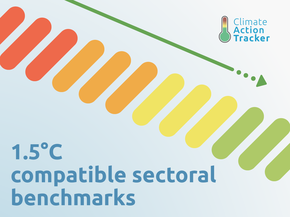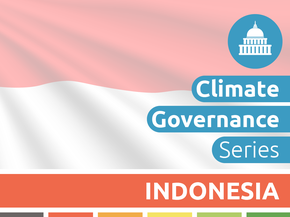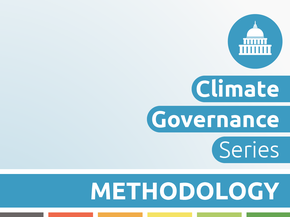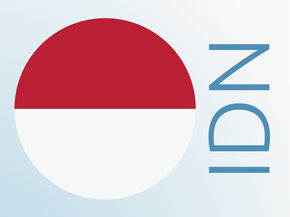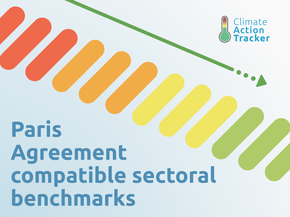Country summary
Overview
Indonesia has updated its Paris Agreement 2030 targets, but both the unconditional and conditional targets remain weak, as the country is set to significantly overachieve both targets with policies it already has in place. While coal still plays a major role in Indonesia’s electricity system and is set to increase under current plans, the government is making positive steps in planning a phase out of coal fired power generation. The international community has a critical role in helping Indonesia to implement a coal phase out that is compatible with the Paris Agreement’s 1.5°C temperature limit.
Indonesia updated its NDC in September 2022, improving its unconditional target from 29% to 32% below its business-as-usual scenario (BAU), and its conditional target from 41% to 43% below its BAU, including emissions from land use, land use change and forestry (LULUCF). We rate both targets as “Critically insufficient” and expect Indonesia to overachieve these by 23–38% with the policies it has implemented. Indonesia’s BAU scenario is outdated and far above current policies. Overall, the CAT rates Indonesia's climate targets and policies as “Highly insufficient”.
Indonesia could significantly increase the ambition in its NDC and improve the transparency by formulating its target relative to historical emissions. The NDC links to the long-term strategy, which includes a pathway that—if implemented—would be compatible with achieving net zero emissions by 2060 or sooner.
To meet its NDC targets, Indonesia must achieve a substantial decrease in LULUCF emissions. Both Indonesia’s conditional and unconditional targets depend heavily on the forestry sector, which accounts for around 60% of the emissions reduction effort. In 2022, the Ministry of Environment and Forestry published an operational plan to reach net negative emissions in the forestry and land use sector by 2030, focusing on prevention of deforestation, conservation of natural forests, sustainable forest management, and enhancing carbon sinks from peatlands and mangroves.
Indonesia’s climate policies are failing to put the country on a development pathway that uses its vast renewable energy potential. Several studies have demonstrated how Indonesia could increase the use of its renewable energy potential far beyond current plans and supply 100% of its electricity with renewable sources by 2050.
With renewables accounting for just 13.5% of the electricity generation mix in 2021, Indonesia needs to make substantial progress in this sector to meet its target of 23% renewables by 2025. In September 2022, Indonesia published a presidential regulation that aims to support the achievement of this target by addressing some of the major financial and regulatory barriers facing renewables.
Coal capacity currently provides 61% of electricity generation and is projected to continue increasing until 2027, and would represent 64% by 2030 under the current electricity sector plan. The recent presidential regulation sets out a 2050 coal power phase out date and mandates the development of a plan to achieve this. However, to meet the 1.5°C temperature limit, unabated coal power in Indonesia must fall to 10% by 2030 and be phased out by 2040. Indonesia will need significant financial support to plan a Paris compatible coal phase out.
In a parallel process, Indonesia is currently exploring an accelerated coal phase-out through the Asian Development Bank’s Energy Transition Mechanism (ETM), Just Energy Transition Partnership (JETP), and bilateral cooperation agreements. Indonesia signed the Global Coal to Clean Power Transition declaration at COP26 and indicated that it is open to phasing out coal in the 2040s and increasing its net zero ambition, conditional on international support.
A coal phase out before 2045 would bring significant environmental, social, and economic benefits—the avoided costs from health care and coal subsidies outweigh the cost of stranded assets, decommissioning, employment transition, and revenue loss by 2 to 4 times. The CAT has estimated that by retiring coal-fired power plants over 20 years old and re-evaluating its coal pipeline, Indonesia could avoid over 45,000 premature deaths in the next decade.
Coal is also Indonesia’s biggest export product and, with major export markets beginning to reduce their consumption, there is a clear need for Indonesia to diversify its economy and reduce the risks of relying on fossil fuel exports.
The CAT rates Indonesia’s overall climate targets and policies as “Highly insufficient”. The “Highly insufficient” rating indicates that Indonesia’s climate policies and commitments are not consistent with the Paris Agreement’s 1.5°C temperature limit and lead to rising, rather than falling, emissions.
We rate both Indonesia’s unconditional and conditional NDC targets “Critically insufficient”, meaning the targets are inconsistent with Indonesia’s fair share contribution and modelled domestic pathways. Indonesia will by far overachieve its NDC targets. The CAT rates Indonesia’s policies and actions as “Insufficient” when compared to its fair share. To get a better rating, Indonesia needs to set more ambitious NDC targets and policies. Its unconditional NDC target would need to be brought well below its current policies to result in emissions close to present levels by 2030, and policies increased to bend the emissions curve. Its conditional NDC needs to be well below present levels in 2030 to drive deep decarbonisation in line with a net zero pathway—and would require significant financial support from the international community.
We rate Indonesia’s policies and action as “Insufficient” compared to their fair share contribution. The “Insufficient” rating indicates that Indonesia’s climate policies and action in 2030 need substantial improvements to be consistent with the 1.5°C temperature limit. If all countries were to follow Indonesia’s approach, warming would reach over 2°C and up to 3°C. A great concern is the continued reliance on fossil fuels, in particular coal.
In the current electricity sector plan (RUPTL 2021–2030), renewables account for 52% of the added capacity between 2021 and 2030 and are targeted to reach 23% of electricity generation by 2030. Coal accounts for 34% of the added capacity (around 14 GW), reaching 64% of the generation mix by 2030, up from the 61% share it held in 2021.
With renewables accounting for just 13.5% of the electricity generation mix in 2021, Indonesia needs to make substantial progress in this sector to meet its target of 23% renewables by 2025. In September, Indonesia published a presidential regulation that aims to support the achievement of this target by addressing some of the major financial and regulatory barriers facing renewables (Government of Indonesia, 2022).
Coal capacity currently provides 61% of electricity generation and is projected to continue increasing until 2027, and would represent 64% by 2030 under the current electricity sector plan. The recent presidential regulation sets out a 2050 coal power phase out date and mandates the development of a plan to achieve this. However, the current plans for the electricity sector are still not aligned with the goals of the 1.5°C temperature limit, for which unabated coal-fired power in Indonesia should be no more than 10% in 2030 (Climate Action Tracker, 2020) and be phased out by 2040 (IPCC, 2018; IEA, 2021).
While there have been some improvements to the regulatory environment for renewables, policies to support low-carbon development in Indonesia need adjusting to realise their full mitigation potential and to see the drop in prices for RE technologies globally reflected in the generation costs in Indonesia. Some design elements of policies supporting the uptake of renewables and the general investment environment still favour large-scale, fossil-fuelled power and prevent a swift and large-scale expansion of renewables. These policies risks creating stranded coal-based assets.
The full policies and action analysis can be found here.
We rate Indonesia’s conditional NDC target as “Critically insufficient” when compared to modelled domestic pathways. The “Critically insufficient” rating indicates that Indonesia’s conditional NDC target in 2030 reflect minimal to no action and is not at all consistent with the 1.5°C temperature limit, for which Indonesia would need to lower its NDC target to 75% below its NDC BAU scenario excl. LULUCF.
If all countries were to follow Indonesia’s approach, warming would exceed 4°C. This target is based on a scenario with substantially higher economic growth than observed in the past. Economic trends post-pandemic now lend even more weight to the possibility that the BAU is unrealistic and should be revised downwards, with corresponding strengthening of its emissions reduction targets.
The CAT’s assessment of Indonesia’s total fair share contribution takes into account its emissions reduction target and its climate finance.
We rate Indonesia’s unconditional target as “Critically insufficient” when compared to its fair share emissions allocation. This rating indicates that, when compared to its fair share, Indonesia’s unconditional NDC target in 2030 reflects minimal to no action and is not at all consistent with the 1.5°C temperature limit, for which Indonesia would need to lower its NDC target to 62% below its NDC BAU scenario excl. LULUCF. It also remains based on a BAU scenario that is substantially higher than its current policy projections, even before the onset of COVID-19.
Indonesia’s emissions from land-use, land-use change and forestry have accounted for almost 50% of the country’s total emissions over the last 20 years. Indonesia has improved efforts in this sector and managed to continue the decreasing trend of annual tree cover loss in the last five years. Reducing emissions from deforestation is a vital part of Indonesia’s climate action.
Indonesia has not yet communicated an explicit net zero target but is exploring scenarios that could lead to net zero emissions by 2060 or sooner.
Further analysis
Country-related publications
Stay informed
Subscribe to our newsletter

